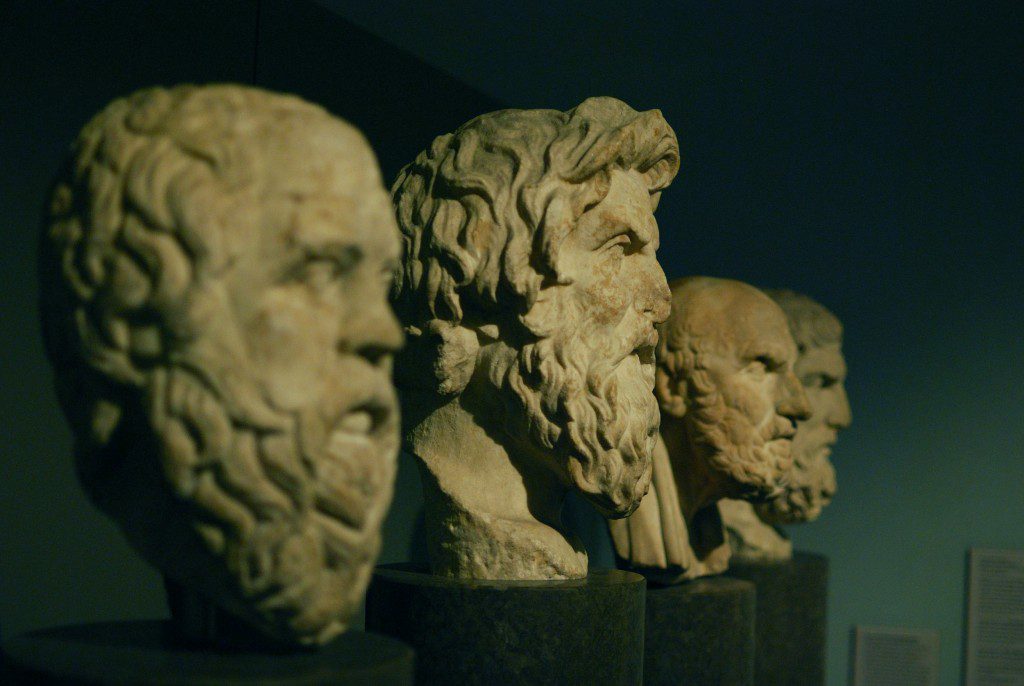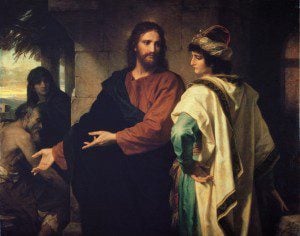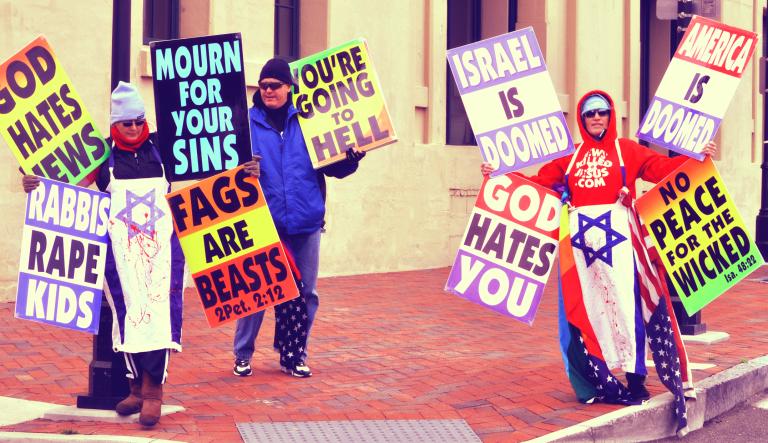I’ll begin this post in italics, mostly so that—since this is my first post here at Peculiar People—I can introduce myself, at least briefly. My name is Joe Spencer. I’m a PhD student in philosophy at the University of New Mexico, where I work on contemporary French philosophy (Louis Althusser, Gilles Deleuze, Jacques Derrida, Alain Badiou, Jacques Rancière, Giorgio Agamben) and the history of early analytic philosophy (Gottlob Frege, Bertrand Russell, Ludwig Wittgenstein, Alfred Tarski, Rudolf Carnap). I’m a regular—if odd—contributor to the world of Mormon studies, focusing principally on scriptural theology. I published my first book, An Other Testament: On Typology with Salt Press in 2012, and it’ll be re-released by BYU Press later this year. When I’m not responsibly working on my dissertation, I’m working on a second book: For Zion: A Mormon Theology of Hope, to be published by Greg Kofford Books. I owe thanks to everyone at Peculiar People for being interested in having me come on board.
Students of Mormon history are well acquainted with—even if they’d generally prefer to forget—the crisis of sorts into which Mormon historiography fell in the early 1980s. The 1960s and especially the 1970s saw a kind of golden age for Mormon history, with fully accessible archives, rapidly growing interest, professional organizations and journals launching, and full institutional support from the LDS Church. Through a very complicated series of unfortunate events, all of that fell apart in the early 1980s. To make a very long story short, the Church lost its faith, for a time, in the historical profession, and the best historians found themselves complexly positioned between two warring camps, camps too easily summed up under titles like “traditionalists” and “revisionists” or “apologists” and “critics.” Strangely, in many ways, the crisis in history ended up giving scripture a major role to play in Mormon intellectual circles. Here again there’s a complicated back-story, one I can’t recount here without getting too long-winded, so it’s enough just to say that the Book of Mormon became the principal—if nonetheless curious—focus of (whatever might have been called) Mormon studies from the mid-1980s right through the 1990s. In many ways, Mormon history went underground for a decade or two, waiting for the right moment—which happened to be the first years of the new millennium—to reemerge with remarkable force, helping to give rise to what is increasingly being recognized as an actual discipline of Mormon studies.
Not enough attention has been given to the fact that the first major book heralding that discipline was a book on the Book of Mormon: Terryl Givens’s 2003 By the Hand of Mormon. Although it took as its focus almost two centuries of reception history, there’s a sense in which it was first and foremost a glance back at the preceding two decades, a study of the twenty years during which the Book of Mormon had a kind of academic heyday. Unfortunately, in many ways, the fact that it could tell that story meant that that story had come to an end. More or less at the moment Givens’s book appeared and cleared a space for the reemergence of Mormon history in full force, both the “apologists” and the “critics,” for no obvious reasons, slowed their publishing efforts. The years since—despite the fact that some of the most remarkable work on the Book of Mormon has appeared!—have seen an unmistakable retreat of the Book of Mormon from the focus of academic study of Mormonism. The result is that it is now time for those who have enjoyed two decades of intense intellectual focus on scripture to experience their crisis.
This crisis has taken the shape, so far, of talk about historicity. In a way, that’s no surprise. With the reemergence of Mormon historiography, and especially with the remarkable sophistication of that enterprise, a discourse characterized by a certain, hard-to-define “neutrality”—originally outlined in the work of Richard Bushman and Jan Shipps in the early 1980s, but now characteristic of the whole field—has come to define the developing field of Mormon studies. Because the two decades of intense study of especially the Book of Mormon made historical setting (whether ancient or modern) the key to the study of Mormon scripture, it is proving difficult for those facing the crisis in Mormon scriptural interpretation to decide what is happening, and what it implies for the study of the Book of Mormon. A certain key word has come already to define the often-heated discussions surrounding this question: bracketing. The question to be asked, most seem to agree, is whether it’s appropriate or not to bracket the historicity of something like the Book of Mormon in order to study that book.
I’ll be presumptuous enough to believe I can shed some light on this question—at the very least because I have myself been the subject of some talk about the advisability or inadvisability of bracketing (see here).
I Don’t Believe in Bracketing
A first, personal point: I don’t bracket. I don’t describe what I do as bracketing. Indeed, I’ve been surprised to see my work—or work like mine—described as employing some kind of bracketing. And, frankly, I’ve got some real worries about bracketing, at least as it’s usually understood.
But I should begin with a working definition of bracketing, as the word is being used in current discussions (I’ll call this definition radically into question later on). What is it to bracket? The idea in circulation is that there’s a kind of assumed impossibility about dealing with the empirically unobservable in academic settings, and so it’s necessary to place within brackets the truth or falsity of any claims made in or by a religious tradition regarding the empirically unobservable—for instance, an account of an encounter with God. The idea is that this sort of bracketing allows, ideally (but seldom really), for the sort of neutrality scholars are supposed to model: by bracketing the truth or falsity of what can’t be observed, the scholar either (1) gives a religious tradition she could never believe a sporting chance to tell its story or (2) finds a way to present without advocating belief in a religious tradition to which she has existential commitments. There are thus two forms of bracketing: (1) a suspension of disbelief, required of the “outsider,” and (2) a suspension of belief, required of the “insider.”
What would this look like when it comes to the Book of Mormon? Well, what gets bracketed here is the question of authorship, or the question of historicity. The unbelieving scholar who wants to give the Book of Mormon a fair shake would bracket her disinclination to believe in order to read the book carefully, while the believing scholar who wants to allow the Book of Mormon to speak to unbelieving audiences would bracket her inclination to believe in order to present the book neutrally. Grant Hardy is explicit about this: “I propose bracketing, at least temporarily, questions of historicity in favor of a detailed examination of what the Book of Mormon is and how it operates” (Understanding the Book of Mormon, p. xvi). And Hardy has reiterated this point since then. Before him was Mark Thomas, who argued that “there are good reasons for bracketing the issues of authorship of the Book of Mormon” (Digging in Cumorah, p. 2)—though it must be said, with Terryl Givens, that “Thomas’s bracketing of historical questions is not entirely sincere—since his book is replete with reference to nineteenth-century cultural factors that constitute the tiles of Joseph’s ‘mosaic’” (By the Hand of Mormon, p. 295). Whatever might be said of Thomas’s inconsistency (or even insincerity, as Givens puts it), Hardy’s methodological commitments are remarkably consistent, at times bordering on the obsessive. The question of whether the Book of Mormon is truly an ancient document, or whether it’s actually a nineteenth-century production, is left entirely out of account.
So that’s bracketing. But let me be clear. That’s not what I myself do. I don’t talk about historicity much in my work on the Book of Mormon, but that’s more because I find it a terribly dull question than because I worry about alienating unbelieving readers. The question of the Book of Mormon’s historicity was decided for me a long time ago, and I just can’t get excited about asking all over again whether there’s good reason for me still to believe in it. (If I have a mild allergy to apologetics—and it is mild—it’s because reading it makes me feel like I’m supposed to be wondering still whether the book is historical. Apologetic literature too often feels like it’s trying to transport me back to when I did have doubts and worries.) Moreover, I find myself worried that if I attempt to bracket historicity, I’ll also be inclined to bracket—that is, ignore—all the seriously productive historically-inclined work that’s been done on the Book of Mormon, whether that work assumes an ancient or a modern setting. I don’t want to leave Nibley and his historicity-driven heirs behind, nor will I refuse to learn from folks like Mark Thomas and Dan Vogel. They’ve all instructed me profoundly about the meaning of the text, and it seems to me simply arrogant to intimate that their historical concerns make their work largely irrelevant.
So I don’t bracket. I as often as not don’t even raise questions that bear on historicity, simply because I’m a theologian and not a historian, but my failure to raise those questions isn’t the result of a willing act of suspension of any sort. But if I don’t bracket, should I worry about alienating unbelievers? For what it’s worth, I don’t much worry about it. If I’m looking for a good study of the Qur’an, I want one that isn’t trying to convince me of its absolute veracity, but I don’t therefore want one that brackets the volume’s veracity. I’d prefer to read one that assumes its veracity (or at least draws on the work of those who assume its veracity) so that I can see how a believer makes sense of the volume. Ideally, the author of the study would also be willing to countenance the critical and skeptical literature, recognizing what can be learned from that approach as well. While I don’t want to read an apologetic work on the Qur’an, I also don’t want to read a work that obsesses over neutrality and the necessity of bracketing. And I feel safe assuming that those genuinely interested in the Book of Mormon but who aren’t interested in deciding its truth (those for whom the truth of the book isn’t a live option) can find something like what I want in a book on the Qur’an in my own work on the Book of Mormon. What matters in a study of a scriptural text from whatever tradition is, in my view, its depth and insight, its ability to see how the book works in the hands of a reader, not its neutrality.
So I don’t believe in bracketing. Well, I don’t believe in bracketing as the term is usually used. There’s a difference between the use of the word in religious studies, etc., and the use of the word in its originally setting, from which it’s been taken. Let me say just a few words about that “original” meaning, because I think I do believe in that sort of bracketing.
The Bracketing I Do Believe In
Whence the word “bracketing” in the first place? Why this metaphor? Ostensibly, the word is borrowed from Edmund Husserl, an important philosopher whose most influential works were written in the first part of the twentieth century.
Husserl’s lifelong project was—like so many of the most important philosophers since the rise of modern science in the seventeenth century—to investigate “the validity of validity,” that is, to study whatever it is that ultimately grounds the truths of science. His contention was that it is only possible to bring validity—the apparent obviousness of science’s truth—into investigation by removing oneself from the “natural attitude” in which that validity holds unquestioned. This is what he called the epochē, the phenomenological reduction, or bracketing. Brackets are placed around the natural attitude so that the nature of the natural attitude can be investigated. The idea is that by disengaging the world of everyday experience, it becomes possible to bring that world of everyday experience into a kind of visibility otherwise unavailable to us; it becomes possible to phenomenalize—to make a studyable phenomenon of—the world of everyday experience in which we presuppose the validity of the scientific worldview.
(Importantly, this kind of disengagement of the world has been compared, quite richly, to the experience of Christian conversion. In lectures given in 1920 and 1921, Martin Heidegger—at the time still a student of Husserl—analyzed the epistles of Paul and argued that the Christian’s experience of being in but not of the world has the same structure as the phenomenological reduction. Obviously, it’d take me too much space to flesh out Heidegger’s comparison, but I think it worth noting that bracketing may have certain connections to the experience of conversion.)
Now, how does Husserlian bracketing compare with the kind of bracketing employed in the field of religious studies—the kind being talked about in discussions about what it means to read Mormon scripture? Not well, in my opinion. Note that all talk of bracketing among Mormon intellectuals is supposedly a matter of bracketing the subjective in order to achieve a certain objectivity or neutrality (of course only as an ideal: most recognize that objectivity and neutrality can’t actually be had). For Husserl, though, what one brackets is precisely the objective, the world of supposed neutrality and objectivity, and one does this precisely in order to see what is really at stake in subjective experience. Although there’s a kind of comparability between what Husserl calls bracketing and what students of religion call bracketing—both want to bracket something that seems natural to the one who wishes to study something—there’s ultimately a rather sharp difference, almost a direct opposition, between them. Husserl aims to bracket precisely the apparent objectivity of science in order to investigate its grounds; the student of religion aims to bracket whatever would supposedly compromise that objectivity in order to remain all the more firmly within it, in order to avoid every investigation of the grounds of science.
It might be further noted that Husserl didn’t mean to suggest with his talk of bracketing that something has to be left out of things in serious investigation. His claim was that a suspension of a certain attitude helps to bring in to serious investigation those things that the natural attitude forces out of the picture. Husserl’s phenomenological method was intended to allow for a more robust study rather than a more limited study of things. Phenomenology as he understood it would allow for the reality of everyday experience to be seen for what it actually is.
How might study of the religious look if it were undertaken in a more directly Husserlian manner? Can Husserlian bracketing be used in the study of, say, scripture? I think so. To get a bit autobiographical again, I might note that I’ve often tried to do something like this in my own work, though I’ve not used the language of bracketing to describe what I’ve done. It’s possible, I think, to bracket the natural attitude that characterizes the reading of scripture. Remember: the point here isn’t to say that we should bracket belief or disbelief and read scripture somehow neutrally or objectively. No, in bracketing the natural attitude one steps back, as it were, from the work of reading in order to ask what’s going on when one reads scripture. In bracketing the natural attitude that characterizes the reading of scripture, one brings phenomenologically to light what it means to read scripture. My own study has taught me that what comes to light in the course of such investigation is that one can only read faithfully, believingly.
That’s a sort of bracketing I can get behind. If bracketing allows me as a student of things religious to see more of what’s going on, to get clear on what a religious phenomenon means, to understand what it is to be religious, then I think we’re onto something. That’s what I hope I do in my own work. It’s what I hope to find in the work of others when I go looking. There are many, many others ways to study religious texts and religious phenomena more generally, and I learn from them all. But I’m always secretly hoping to find something like what I’ve described here.
Is there a direction students of Mormon scripture might collectively pursue in order to move toward a resolution of the current crisis? I believe so, though I don’t pretend to know exactly what that direction is. At the very least, I hope I’ve said something here that might help to shine a little light on the paths that might be taken.










